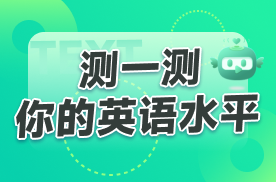2015职称英语考前预测:卫生类概括大意练习(10)
2015-03-04 14:10
来源:新东方网整理
作者:
The Safeness of IUDs for HIV-positive Women
1. Women infected with the most common form of HIV may safely use the intrauterine device (IUD)for contraception, provided they see a doctor regularly, new study findings suggest.
2. World Health Organization guidelines currently state that, in general, HIV-infected women should avoid IUDs. “Those guidelines were essentially made on theoretical concerns, and there are really very little data on what contraceptive is appropriate for HIV-infected women,3” said the lead author Dr. Charles S. Morrison in North Carolina4.
3. Morrison and colleagues gathered information on IUD-related complications at 1, 4 and 24 months after placement of the device in 636 women living in Nairobi, Kenya5. Of these women, 156 had HIV infection. Participating physicians did not know the patients’ HIV status. There was “little difference in any side effects in HIV-infected women compared with HIV-uninfected women, suggesting that the IUD is likely an appropriate method for HIV-infected women,” Morrison said. “This is an important issue, because there are now 16 million women living with HIV and a lot of them have a critical need for contraception,” he added.
4. The researchers did find6 that women with infections such as gonorrhea or chlamydia at the study’s outset were at increased risk of IUD complications, confirming current guidelines suggesting that women with sexually transmitted diseases not use IUDs.7
5. In addition, there was no difference in the amount of virus the HIV-positive women were releasing from their cervix, or shedding8, at the beginning of the study compared with 4 months after the IUD was inserted, the researchers reported in the August issue of the British Journal of Obstetrics and Gynaecology. Conversely, some studies have shown a relationship between increased cervical HIV shedding and the use of oral contraceptives.
6. “What this study suggests is that you need to avoid IUD use in women with a cervical infection but not women with HIV infection,”Morrison said. “Women with cervical infections are at increased risk of complications: women with HIV infection are not.”
练习:
1.Paragraph 2 ______
2.Paragraph 3 ______
3.Paragraph 4 ______
4.Paragraph 6 ______
A Morrison’s Survey and Findings
B Comments on Current Guidelines
C The Relation of Sexually Transmitted Diseases to IUD Complications
D The Concrete Contents of Current Guidelines
E A Conclusion of Morrison’s Study
F The Relationship Between Cervical HIV Shedding and Using IUDs
5.According to current guidelines, women should not use IUDs ______.
6.Current guidelines barely recommend ______.
7.From both current guidelines and the new study we may conclude ______.
8. The new study maintains that the IUD is a safe contraceptive method for HIV-infected women ______.
A what contraceptive is good for HIV-infected women
B if they go to see the doctor at regular intervals
C what a relationship between increased cervical HIV shedding and the use of oral contraceptives
D that sexually transmitted diseases may increase the risk of IUD complications
E if they are HIV carriers
F that taking oral contraceptives is much safer than using IUDs for HIV-infected women
答案与题解:
1.第二段主要是Morrison对世界卫生组织制定的“指南”做出评价,指出“指南”主要是根据理论制定的,而很少有关于什么避孕方法适合感染HIV妇女的资料。
2.A 第三段讲的是Morrison等人对636名装了IUD的肯尼亚妇女进行的调查,他们搜集到的资料证明了IUD所引起的副作用,感染HIV的妇女与没有感染HIV的妇女没有什么差别。
3.C 第四段说研究人员的确发现了患性传播疾病的妇女,其患IUD并发症的危险性增加,说明了二者之间的关系。
4.E 最后一段是Morrison的研究结论,即有宫颈感染的妇女要避免使用IUD,因为发生并发症的危险性增加,而感染HIV的妇女并非如此。
5.E 本题答案在第二段第一句。该句说到感染HIV的妇女应该避免使用IUD。
6.A 第二段第二句说到“指南”中没有什么资料涉及什么样的避孕方法适合感染HIV的妇女,故基本上没有介绍。
7.D 本题答案来自第四段,在confirming之前已肯定了危险性增加,而confirming之后证明了现有“指南”的意见是对的,故从现有“指南”和最新研究可以得出相同结论。
8.B 文章第一段以及第三段中间“suggesting...for HIV-infected women”都表达了本题的意思。
更多精彩内容 >> 新东方网英语频道
全国新东方英语课程搜索
(责任编辑:何莹莹)
|
|
|
|







